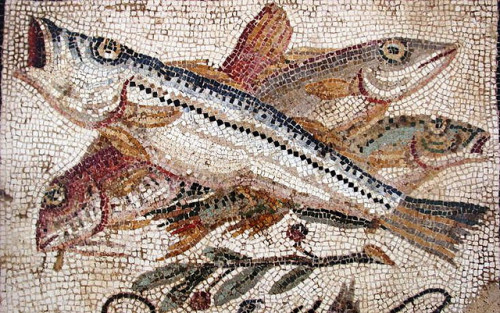Garum — The official condiment of the ancient Roman EmpireIn the ancient Roman world a salty,
Garum — The official condiment of the ancient Roman EmpireIn the ancient Roman world a salty, oily condiment made from fermented fish guts took the Roman Empire by storm. Called garum, it became an important commodity all over the empire, providing fats, protein, salts, vitamin, minerals, and most importantly flavor to places in the empire were little could be found. Originally a Greek creation, the Roman obsession with garum would propel the fish sauce to become the most popular condiment in the Roman Empire.Our modern society is a very wasteful society, we take it for granted that we can just use something and throw it away. However, our ancestors had a completely different attitude. Nothing went to waste and everything was put to use. “Waste not, want not” was not simply a saying, but a mantra that meant life or death, prosperity or disaster for ancient people’s. So if an animal was slaughtered, it was guaranteed that every part was consumed or used in some way. Garum was a result of this culture. When the fishmongers gutted the daily catch, the guts were not merely thrown away, rather they were gathered by the garum maker. The guts were coated with salt, layered in large urns, and left out to heat in the sun for one to three months. During this time the ingredients would liquefy and ferment, forming a thick paste. When ready, a clear amber colored fluid would separate for the thicker material. This clear fluid was pure garum, and was skimmed, bolted, and sold for a hefty price. The skimming of more fluid would lead to cloudier and less pure forms of garum, which were much cheaper. The remaining paste was called “allum”, and was sold as a budget “poor mans garum sauce”. All grades of garum were flavored with different herbs and spices, depending on local tastes.Because the Roman Empire was centered in the Mediterranean, the Roman economy was also heavily dependent on fishing. Numerous fisheries and ports dotted all along the Mediterranean coast, and where there fisheries, there were garum makers. Usually, however, the garum makers were relegated to the outskirts of a city, as the process of garum making tended to create an enormous stench. Garum itself became one of the most important commodities of the Roman world, being shipped all over Europe, the Middle East, and North Africa. It was issued regularly as rations for Roman soldiers and was even accepted as money. Garum was also valued for its medicinal value; used to treat dog bites, diarrhea, ulcers, dysentery, to remove unwanted hair, and to remove freckles.Alas the fall of the Roman Empire would lead to the fall of garum, especially as Germanic peoples who turned their noses at fermented fish sauce settled Europe and carved out kingdoms from the former Roman Empire. Today garum still can be found, though only produced by small business who cater to specialty gourmet foods. At around the same time the Romans were making garum, peoples in Southeast Asia were making a remarkably similar fish sauce called nước mắm, which today is still widely popular in Vietnamese, Thai, and Cambodian cuisine. -- source link
Tumblr Blog : peashooter85.tumblr.com
#history#ancient rome#roman empire#food#condiments#sauce#fish#fish guts#fermentation#garum#romans#ancient history#ancient


